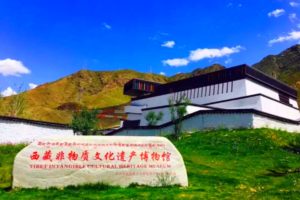The Tibet Museum for Intangible Cultural Heritage is located in Lhasa, the capital city of Tibet Autonomous Region, China. It was established to showcase and preserve the rich intangible cultural heritage of the Tibetan people.

The museum had been completed for 2 years. The world’s highest-altitude intangible cultural heritage museum opened to the public in the second half of 2018. The museum covers an area of 40,000 square meters in the regional capital of Lhasa, 3,750 meters above sea level.
The design of the main building is based on the styles of the Potala Palace and Jokhang Temple, merging traditional Tibetan building techniques with a contemporary architectural style.
The museum exhibits several hundred items of intangible cultural heritage such as Gesar singing, Tibetan opera, and Thangka paintings, encompassing practices and living expressions handed down by the Tibetans from one generation to the next.
A surrounding garden of up to 25,000 square meters also features nearly 1,000 plants, including some that can only be found on the Tibetan plateau and others from around China.
According to the cgtn















